The American Heritage of Wild Horses

As discussed in the article below, horses DID NOT arrive in the Americas around 1492: They were already there.
Horses evolved in the Americas; horses did not exist anywhere else before 17,000 years ago. Therefore, even under the bogus timelines and definitions of invasive species “biology”, horses’ presence in America before Columbus arrived in 1492 would make them “native”. This, says the author, is the context in which wild horses should be managed.
NOTE: this article was written by William E. Simpson II. It is posted with his permission.
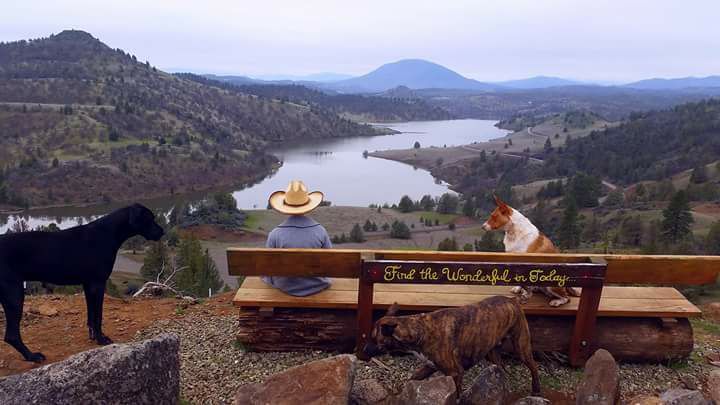
Will the next generation of ranchers know their history?
Our history is important when it comes to managing our public lands, natural resources and wildlife.
Much of our factual history today is being obscured by the white-noise of ignorance and politics that abounds in the media, where hearsay and monetary-motivated myths are sometimes couched as fact.
Some of our most important history comes from the cowboys of old, who had no particular political agenda.
If we lose our knowledge of our heritage and tradition, we lose ourselves.
America can’t afford to lose sight of the fact the horse is man’s best friend, not the dog, and I have a good one, a McNab-Queensland Healer.
If we are being honest and loyal to ourselves, we must never forget that we built America off the backs of our horses. As men and women of the West, we should never, ever forget that all-important fact.
As we read in this accounting (link below) of early horse breeding, many of today’s American horse breeds stem-from native American wild horses, aka Mustangs.
www.southwestspanishmustangassociation.com/HistoryMedicineSprings.html
A local cowboy of note; George F. Wright:
George F. Wright was born in Hornbrook CA in 1897 and grew-up in a cabin just 2-miles north of my ranch, Wild Horse Ranch, just a half mile north of the OR-CA fence-line in what is today’s Cascde-Siskiyou National Monument. The old foundation stones of his cabin remain today, along with the nearby family graves.
George was 1/8 Cherokee on his mother’s side. His oldest surviving relative today is Tom Wright, who is 85 and lives in Butte Falls in a cabin he built by hand. The family has entrusted me with George Wright’s diary and the family photo album so that I could continue my study of our local cultural archaeology and natural history, as detailed in George F. Wright’s 206-page diary.
The diary was transcribed and typed (on an old Singer typewriter in 1971) from the original diary that was written in pencil on the backs of labels off canned food and old paper bags (I have some of that too). George was a Deputy Sheriff for Jackson County and a range rider for the Bureau of Land Management. George passed away in 1983, but his life lives-on in history and legend.
Wright’s records of the natural history of northern Siskiyou County are of great importance to our local history and heritage. The Bureau of Land Management relied heavily upon George F. Wright for a majority of their knowledge of local history and for knowledge and locations of 50-archealogical sites that are scattered around the present day Cascade-SIskiyou National Monument.
What can we learn from George F. Wright’s writings and the family photo album (photos from 1911-1957)?
Here are a few of the notable facts that debunk some of the myths that have been repeated via unfounded hearsay over the last 65-years:
1. George F. Wright observed and recorded the fact that numerous grizzly bears lived in the area of the OR-CA fence line. The most famous of those grizzly bears, and the largest of them was named ‘Real Foot’. This bear was a famous livestock killer, and regularly took adult cattle and sheep. There were also many black bears and wolves in the area along with the coyotes. George wrote the original story about Real Foot, which ended when several cowboys on horseback finally shot him to death after many years of livestock losses.
2. Herds of hundreds of wild horses, whose ancestors numbered in the thousands in 1580, remained in Northern California and Southwestern Oregon in the 1800’s thru the early 1900’s. Today these wild horses are termed (semantically) as ‘feral’ by various agencies. Regardless of jurisdictional semantics, we cannot avoid the now well-proven documented facts about native species American wild horses:
a. The modern horse, scientifically known as Equus Caballus, evolved in North America 1.7-million years ago.
Sometime around 15-17 thousand years ago, some of the North American wild horses crossed the Aleutian land bridge and entered into Asia. And from there, populated into Europe and Africa over the next 12-thousand years, and were eventually domesticated in Asia, Mesopotamia, Africa and Europe. Prior to this time (17,000 years ago), no horses existed outside North America; this is a fact made clear by the fossil records and is settled science.
b. The modern horse (Equus Caballus) is by scientific definition a native species in North America; that is scientific fact.
c. The famous British Knight and world explorer Sir Francis Drake sailed up the west coast of America in 1580.
On that voyage, which was just 68-years after Christopher Columbus discovered America (October, 1492), Sir Francis Drake observed and noted in his ships log that there were a plethora of wild horses living among the indigenous peoples in Northern California and Southwestern Oregon (our backyard).
Of note is that in 1769, 189-years after observations of wild horses made Sir Francis Drake, it was then that the first Spanish parties set north from Baja California, and the line of Spanish settlement along the coast was inaugurated when soldiers and priests established a presidio and mission church at San Diego
Ships during the time of Columbus ranged in size from 50-feet to 70-feet in length. We know from the Spanish archival records (ship’s manifests) that each ship could only carry 12-17 horses hung in slings for the crossing over the Atlantic Ocean from Europe to America. Records show that about half the horses died on the voyage, meaning that only 6-7 horses were landed in America by each ship, and as prized transportation, were kept well secured and corralled. They were not let loose to run free.
Doing the basic math; we quickly see that over the 68-year-period between the first arrival of Columbus and the time of Sir Francis Drake’s observations of thousands of horses on the other side of America, 2,500 miles away and across mountain ranges, there is no arguable way that the scant few, corralled, horses landed by the first Spanish arrivals could have possibly bred into tens of thousands of horses, and then escaped and crossed a continent. That is just nonsense.
The bottom line is that; when Columbus first arrived, there were already tens of thousands of wild horses in America.
The evidence of post Ice Age, pre-Columbian native species American wild horses is beyond any logical doubt:
This is an extracted quote from the dissertation by Dr. Yvette Running HorseCollin, titled;
The relationship between the indigenous peoples of the Americas and the horse: deconstructing a Eurocentric myth, which can be read in it’s entirety at the following URL:
https://scholarworks.alaska.edu/handle/11122/7592 – Page 39:
“The Spanish conquistadors were not the only European explorers to have noticed and recorded early sightings of horses in the Americas. In 1579, the Queen of England sent Sir Francis Drake to “The New World.” Drake also recorded having seen herds of horses in the Americas during his voyage off the coasts of what are now known as California and Oregon. An account given of Drake’s landing in the geographic areas now known as Northern California and Southern Oregon includes the English explorer’s description of the homes of the Native Peoples, as well as the animals that he encountered. “It related his wonder at seeing so many wild horses, because he had heard that the Spaniards had found no native horses in America, save those of the Arab breed which they had introduced.” 116 In addition to accounts from explorers appointed by European kings and queens, there are accounts of native horses in South America in the area now known as Argentina. One such account even includes an explanation as to why the Spanish may have been motivated to hide the fact that the Indigenous horse of the Americas existed and had a relationship with Native Peoples. According to an article entitled Antiguedad del Caballo En El Plata (The Antiquity of the Horse in the River Plate) by Anibal Cardoso as cited by Austin Whittall on his blog site article
115 Ibid., 53.
116 Henry S. Burrage, Original Narratives of Early American History. Early English and French Voyages (New York: Unknown Binding, 1906), 23.“
——————————–
These findings do not discount the fact that we must manage livestock and wild horses according to ‘best practices’, which must evolve as our knowledge of natural history increases.
We now know that commingling livestock with wild horses in Herd Areas is a mistake because wild horses are the co-evolved prey of North American apex predators, and that the evolved prey-predator relationship is critical to genetic vigor. Furthermore, in order to maintain optimal genetic health, disease control and population equilibrium in ecosystems (Natural Selection), wild horses must be managed in areas where their co-evolved predators are present in proper populations. However, these same areas with robust apex predator populations are manifestly unsuited to livestock production.
As such, wild horses should be kept and managed in remote wilderness areas where livestock production is ill-advised due to the high costs of logistics-transportation and depredation via predator populations. And by humanely relocating wild horses from the Bureau of Land Management and U.S. Forest Service Herd Management Areas, where wild horses are in conflict due to being commingled with livestock, we can accomplish two very important goals:
1. Relocating wild horses out of Herd Management Areas where they are in conflict with livestock grazing, creates more grazing in these areas, which are ideal for livestock grazing due to reasonable cost-effective access (decent roads) and significantly reduced apex predator populations as compared to deep wilderness (critical wilderness) areas; and.
2. Wild horses that are relocated (rewilded) into deep wilderness (aka: critical wilderness areas) are very effective at wildfire grazing, which due to their digestive biology also keeps co-evolved native flora vibrant via the ability of horses to naturally reseed native plants as they graze. This natural reseeding of native plants does not occur with ruminant grazers (cattle and sheep) due to their complex stomachs and digestion, which digest virtually all the seeds they consume.
On the other hand, horses do not digest most of the native seeds they consume, and those seeds are deposited back onto the landscape intact and ready to germinate in the humus substrate that is the horse’s dung. As such, wild horses also benefit wildfire damaged soils, by adding humus, native seeds and microbiome that is contained in their dung, which also helps to inhibit post-wildfire erosion that silts-in the spawning grounds of salmon and trout.
There is a new naturally sustainable and holistic management plan that can, in many cases, offers a humane alternative for wild horses that is superior to rounding them up and warehousing them off-range in confinement and potentially subjected to the black-market horse slaughter pipeline. This plan also negates the folly of selective breeding of wild horses via the use of dangerous chemicals like PZP, that are shot into wild horses, which results in genetic erosion and ultimate genetic failure.
That new management plan is called the ‘Wild Horse Fire Brigade‘.
Here are a couple pages from the diary of George F. Wright:

Page from Geo. F. Wright diary Page from the Geo. F. Wright diary
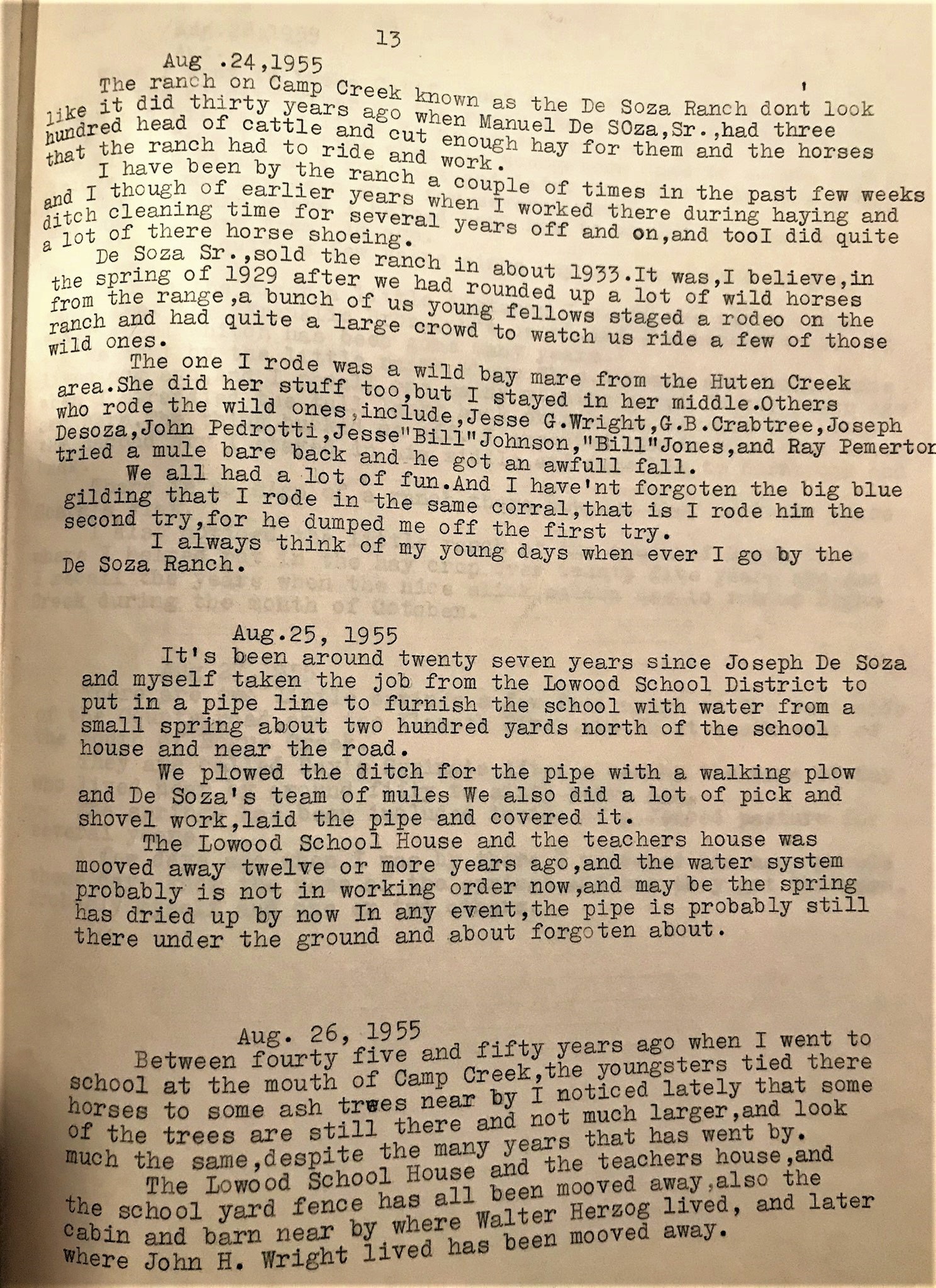
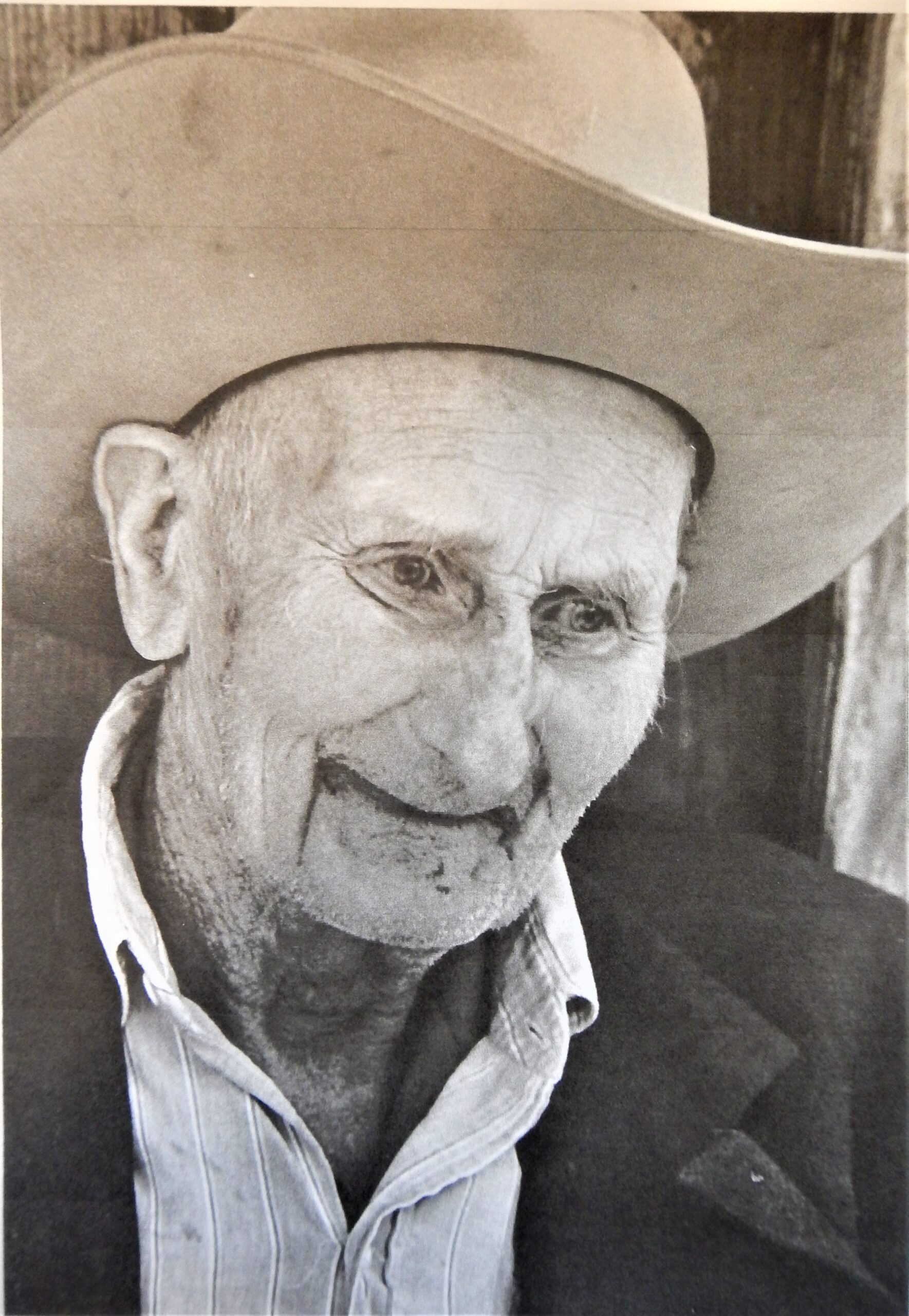
George F. Wright – Local Cowboy and Legend
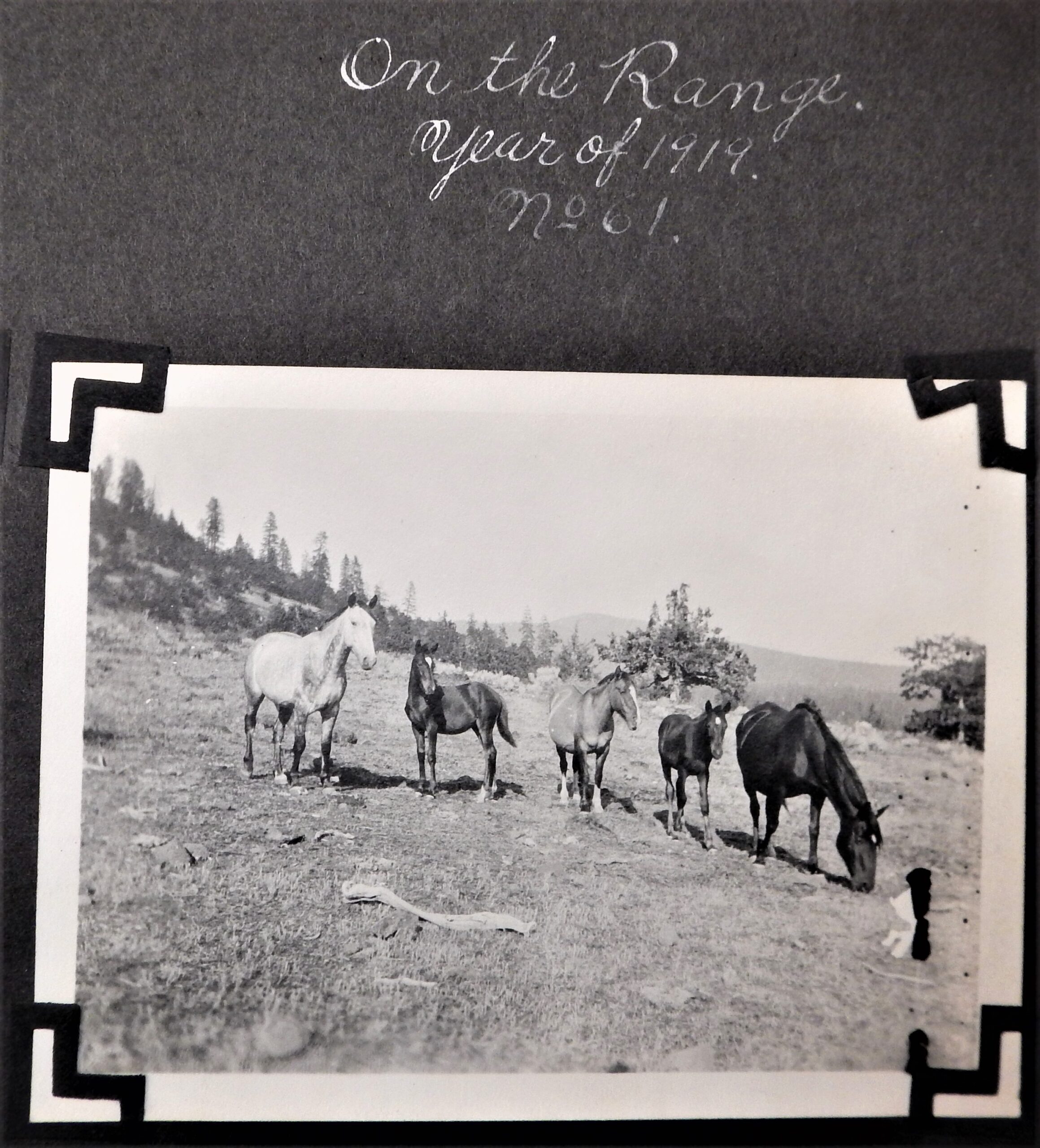
Wild horses on the range in 1919
If we use logic combined with an intellectually honest approach to managing wildlife (wild horses included) and our livestock, we can do a much better job than we are at this point in time.
We must use actual facts and science to inform our actions on the landscape, which will provide more cost-effective results for our taxpayers.
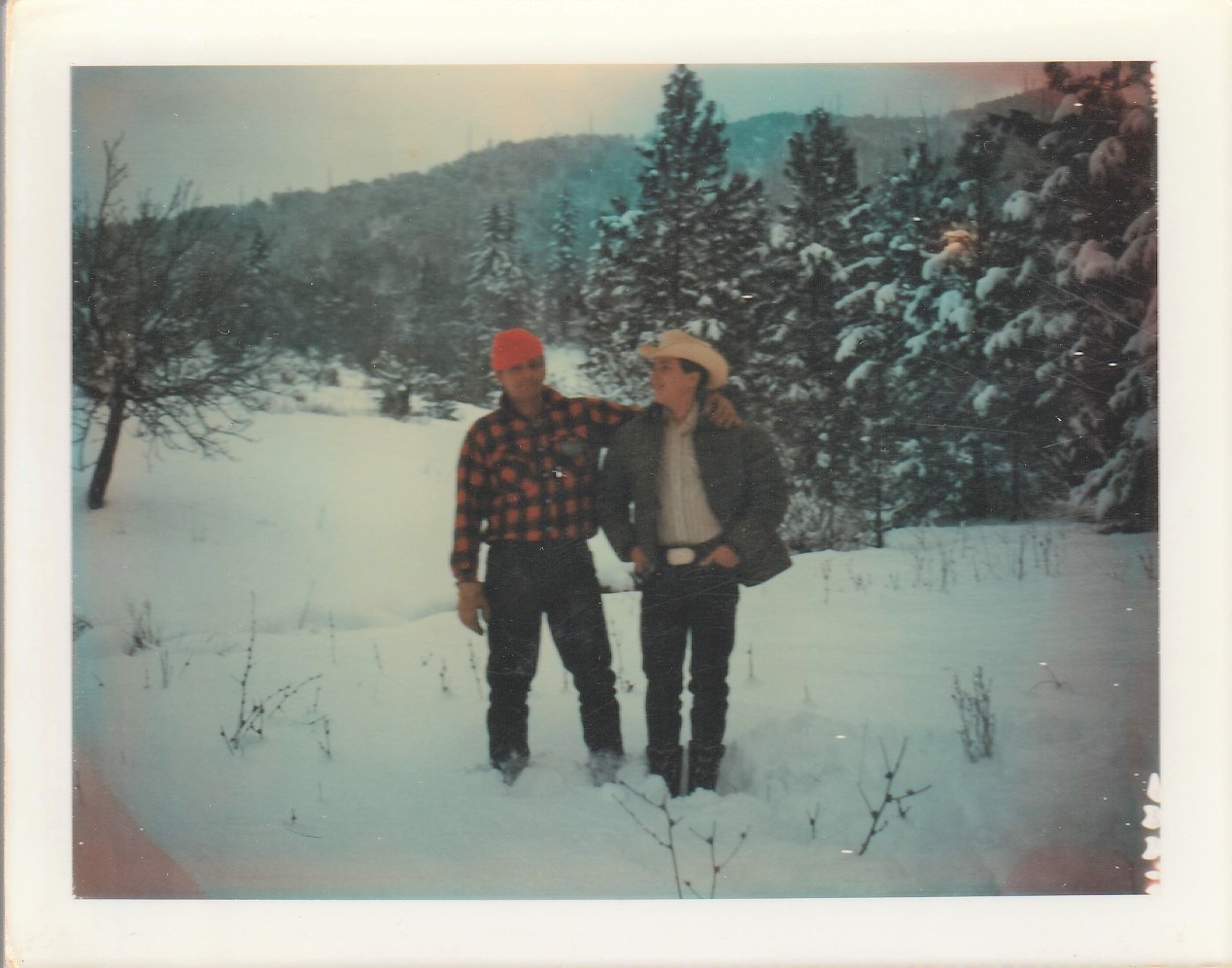
Author William E. Simpson II and his father on the family ranch (circa 1966)
========================================================================
Capt. William E. Simpson II – USMM Ret.Ethologist – Author – Conservationist
Wild Horse RanchP.O. Bx. 202 – Yreka, CA 96097
William E. Simpson II is an ethologist living among and studying free-roaming native species American wild horses. William is the award-winning producer of the micro-documentary film ‘Wild Horses‘. He is the author of a new Study about the behavioral ecology of wild horses, two published books and more than 150 published articles on subjects related to wild horses, wildlife, wildfire, and public land (forest) management. He has appeared on NBC NEWS, ABC NEWS, theDoveTV and has been a guest on numerous talk radio shows including the Lars Larson Show, the Bill Meyer Show, and on NPR Jefferson Public Radio.
Check out William’s Film Freeway account for films, studies, TV & radio interviews, and more HERE: https://filmfreeway.com/WilliamESimpsonII
—
For more posts like this, in your inbox weekly – sign up for the Restoring Diversity Newsletter
